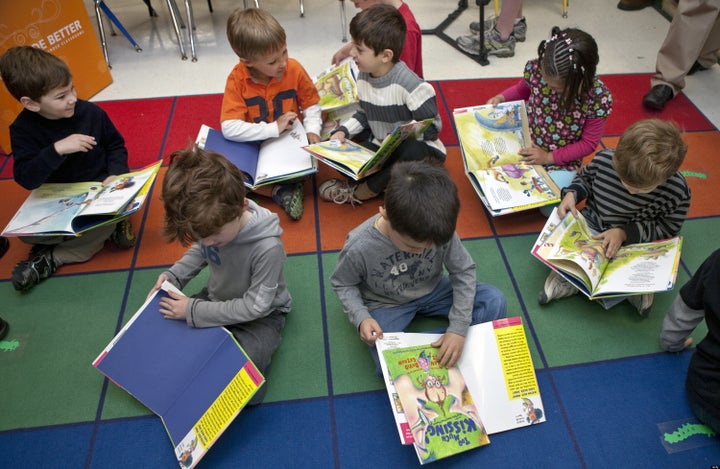
Piece cross-posted on Early Word.
The hum you heard over the weekend came from children's librarians infuriated by Friday's NYT article, "Picture Books No Longer a Staple for Children." According to the article, parents discourage young children from picture books, pushing them to more text-based "chapter books." As a result, the article states, publishers are releasing fewer picture books.
Parents who snatch picture books from tiny hands and force "chapter books" on children barely old enough to decode the words overlook what picture books can do for young minds.
Here's what my librarian colleagues from around the country say about picture books.
- Picture books give children practice in visual literacy. Jon Scieszka's perennial favorite The True Story of the Three Little Pigs by A. Wolf (Viking Childrens, 1989) makes use of a sophisticated unreliable narrator. Children learn critical thinking skills as they study the book's art, looking for contradicting evidence of the verbal story.
- The text of picture books is often written at a higher reading level. Children need to hear this higher vocabulary to acquire language before they can read it.
- On the other hand, while series chapter books are great for reading practice, their vocabulary and sentence structure are simplistic and their plots formulaic.
- Picture books provide self-recognition. In Mo Willems' Knuffle Bunny, kids relate to toddler Amy's frustrated attempt to make her father understand her bunny was left behind at the Laundromat. This story could not be told through the limited language of chapter books.
- Picture books for older children give a window into history, cultures and communities other than our own with sophisticated artistic representation. Consider, for instance Gregory Christie's Brothers in Hope: The Story of the Lost Boys of Sudan.
- Rhythm, rhyme, and repetition of early picture books support the learning of reading skills like phonemic awareness, phonics, comprehension and fluency.
P.S. Check out this kid-tested list of fabulous picture books to read aloud, selected by Bank Street College of Education's School for Children 1st through 4th graders and almost 2,000 students from our cooperating schools
Piece cross-posted on Early Word.